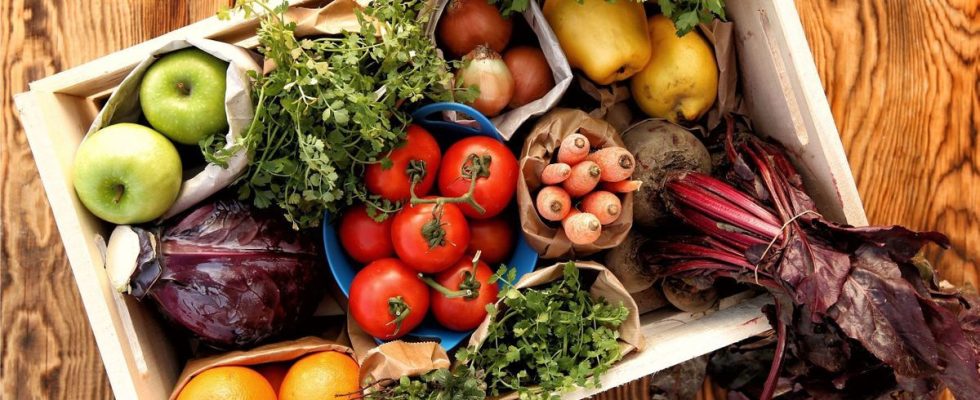Published on
Updated
Reading 2 mins.
On farms, at the market or in the canteen, organic is resisting! While we have been wondering in recent months about the usefulness of buying organic by evoking a need for more transparency and information, products labeled AB have not completely disappeared from everyday life.
The French shun organic. This is a statement that has been coming up constantly for many months when it comes time to take stock in an inflationary context affecting more conventional products (+6.7% overall) than organic (+4%). And the figures don’t lie: in 2022, sales of organic products in supermarkets fell by 7.4% year on year, according to data from NielseniQ. In a newly published analysis, the panelist indicates that two baskets of consumers in supermarkets out of a hundred are abandoning organic products. Concretely, this means that AB labeled items represent 3.9% of volumes purchased in 2023, compared to 4.3% in 2022 and 4.4% in 2021. Organic shopping now concerns 6% of French shopping carts, a figure down slightly compared to 2021 (6.44%). According to NielseniQ, this decline can be explained by the decrease in sales of organic milk and eggs, two emblematic categories of organic consumption. By comparison, the French buy as much organic as the Americans, but less than the Danes (13%) or the Austrians (11%).
NO to diets, YES to WW!
Local organic… and in the canteen!
While the drop in organic consumption started in 2021 when sales for home consumption fell for the first time since 2010, by around 1.4%, the French have not completely turned the page on these environmentally friendly products. According to data published by the Agence bio, direct sales of labeled food on the farm or at the market increased by 3.9%. The “dynamism comes both from a greater turnover of sellers already established in 2021 and from the increase in the number of operators, who practice direct sales to consumers”, comments Agence Bio. According to the organization that orchestrates the promotion around this label, consumers associate the values of organic and local in this type of purchasing channel. They no doubt find meaning in it, whereas last March a ObSoCo study underlined a feeling of vagueness around the organic shelf. 57% of consumers surveyed said they had doubts whether a product was truly organic. The performance of organic direct sales is not insignificant. This distribution network represents 13% of the AB product market. 26,000 farms sell organic food throughout France.
Moreover, while all organic sales are on the decline in the various mass distribution formats, from hypermarkets (-6.1%) to drives (-9.5%) via stores (-2.5%), hard discount is resisting by presenting the only positive result of distribution, ie sales up by 11%. In short, low cost goes organic!
And that’s not all. If the French place less often organic items in their basket when they do their shopping, they still consume them when they go to collective restaurants. Canteens have visibly made good progress on the subject, making 7% of their purchases organic. We are talking in particular about 80,000 collective restaurants. In total, organic consumption outside the home is up 17%. However, it is necessary to qualify this dynamic by recalling that the French buy organic products mainly for their consumption at home, which represent 92% of the market.
